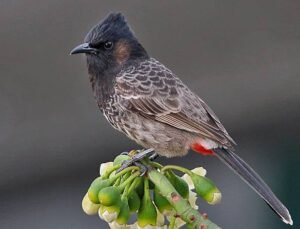Monsoon Snakebite Awareness
With the arrival of the monsoon season, we welcome the much-needed rains that cool down the summer heat and rejuvenate the environment. However, this beautiful transformation of nature also brings hidden dangers, one of the most serious being the increased risk of snakes entering homes and the rise in snakebite incidents. During this time, the damp environment and flooded burrows push snakes out of their natural habitats, forcing them to seek shelter in human dwellings, farmlands, and even inside homes.
This article is a comprehensive guide to snakebite awareness during the monsoon, addressing the causes, risks, preventive measures, emergency response, and how to safeguard your home and family. Every year, hundreds of lives are lost due to a lack of awareness and delayed medical attention. It’s time we change that with education and precaution.

Why Do Snakes Enter Homes During the Monsoon?
Snakes are cold-blooded reptiles that seek dry, warm, and undisturbed spaces for shelter. During heavy rains:
- Flooding of snake habitats such as holes, fields, and forested areas displaces them.
- Rodents and frogs, which are prey for snakes, move toward human settlements, followed by their predators.
- Dark, cluttered, or damp spaces in homes offer ideal refuge to snakes.
- Open doors, windows, drainage pipes, and cracks in the walls serve as entry points.
Understanding these behaviors helps us prevent accidental human-snake encounters.
High-Risk Areas and Snakebite Hotspots
Certain environments and professions are more vulnerable to snakebite incidents during the rainy season, such as:
- Rural areas where agriculture is the main occupation
- Farmers, laborers, and field workers working barefoot or during early morning/evening hours
- Children playing outdoors near bushes, woodpiles, or garbage
- People sleeping on the floor or in poorly lit and poorly maintained homes
- Flood-affected zones and low-lying areas with heavy vegetation
In India, most bites are caused by the “Big Four” venomous snakes – the Indian Cobra, Russell’s Viper, Common Krait, and Saw-scaled Viper – all of which become more active during monsoon.
Most Common Snake Species Seen During Monsoon
It’s essential to recognize the types of snakes likely to appear during this season:
| Snake Name | Venom Type | Risk Level |
|---|---|---|
| Indian Cobra | Neurotoxic | Very High |
| Russell’s Viper | Hemotoxic | Very High |
| Common Krait | Neurotoxic | Extremely High (Night Bites) |
| Saw-scaled Viper | Hemotoxic | High |
| Checkered Keelback | Non-Venomous | Low |
| Indian Rock Python | Non-Venomous | Low |
What to Do to Prevent Snake Encounters at Home
Preventing snakes from entering your home is the most effective step. Here are the practical precautions to take:
- Seal cracks and holes in walls, floors, doors, and windows.
- Use mesh or covers on all drains, air vents, and pipe openings.
- Keep surroundings clean and garbage-free to avoid attracting rodents.
- Trim bushes and grass regularly around the house.
- Avoid storing firewood, bricks, or clutter near entrances or in dark corners.
- Install door sweeps and keep doors closed, especially after dusk.
- Illuminate pathways and use flashlights when walking at night.
- Don’t sleep on the floor, especially in rural homes. Use a bed with tucked-in nets.
What to Do If You Spot a Snake
Seeing a snake can be terrifying, but panicking is dangerous. Here’s the right approach:
- Stay calm and avoid sudden movements.
- Do not try to kill or capture the snake.
- Maintain a safe distance (at least 6 feet or more).
- Secure the area and keep pets/children away.
- Call local wildlife rescue teams or forest officials.
- Mark the spot where the snake was seen to track its direction if needed.
Educate your community to treat snakes as protected wildlife, not pests to be killed.
How to Identify a Snakebite
Snakebites may or may not show visible marks but often present specific symptoms. Venomous bites can cause:
- Two puncture wounds (fang marks)
- Swelling, pain, and redness at the bite site
- Nausea, dizziness, or difficulty breathing
- Blurred vision, muscle paralysis (Common Krait/Cobra)
- Bleeding, blood in urine, or drop in blood pressure (Vipers)
- Loss of consciousness in severe cases
Non-venomous bites, although less dangerous, must still be treated to prevent infection.
First Aid for Snakebite Victims
Time is critical. The right first aid can save lives. Follow these steps:
- Do not panic – Calm the victim.
- Immobilize the bitten limb – Use a splint or sling.
- Do not cut, suck, or wash the wound – These actions do more harm.
- Do not apply ice or tourniquet – They worsen tissue damage.
- Remove tight items like bangles, rings, or shoes.
- Keep the victim still – Less movement slows venom spread.
- Take the victim to the nearest hospital immediately.
- Inform the doctor of the snake’s appearance, if known, but do not delay care trying to catch or kill it.
Anti-venom is the only effective treatment for venomous snakebites. Most primary health centers in India are equipped with it.
Snakebite Myths That Need to Be Debunked
- “Snakes always inject venom while biting” – Not true; some bites are “dry.”
- “All snakes are poisonous” – Less than 30% are venomous.
- “You should cut the wound and suck out the venom” – Absolutely false and dangerous.
- “Black stones or herbs can cure snakebites” – There is no scientific basis.
- “Tying a rope above the bite stops venom” – It leads to tissue damage and can worsen the situation.
Raising Awareness: What You Can Do
- Conduct community education camps before and during the monsoon.
- Put up posters and awareness leaflets in public areas.
- Train local health workers and teachers on snakebite response.
- Encourage school programs on snake education for children.
- Share awareness videos and posts on platforms like Wildlife Nest YouTube Channel
Awairness Video
Emergency Contact List for Snakebite Rescue
Keep a handy list of the following:
- Local snake rescue teams
- Government Forest Department numbers
- Nearby hospital emergency numbers
- Ambulance services
In many regions, local NGOs and wildlife organizations offer 24/7 snake rescue support.
Conclusion
As the monsoon season unfolds, it’s vital to remain alert and informed. Snakebite is a preventable public health issue. With the right precautions, awareness, and prompt medical help, we can save hundreds of lives every year. Let us protect not just ourselves, but also our fellow species by spreading awareness and preventing unnecessary human-snake conflict.
Remember, knowledge is the key to survival. Stay safe, stay aware, and make your home a safe space this rainy season.
Frequently Asked Questions (FAQ)
1. Why do snakes enter homes during the rainy season?
Snakes often enter homes during monsoon because their natural shelters like burrows and open fields get flooded. In search of dry, warm, and dark places, they often take refuge in human settlements such as homes, basements, store rooms, and garages.
2. Are snakebites more common in monsoon?
Yes. The number of snakebite cases increases significantly during the monsoon because of higher human-snake encounters caused by displacement, outdoor farming activities, and poor visibility during heavy rains.
3. What are the most dangerous snakes during monsoon in India?
The “Big Four” venomous snakes are the most dangerous and commonly responsible for fatal bites:
- Indian Cobra
- Common Krait
- Russell’s Viper
- Saw-scaled Viper
4. What should I do immediately if someone is bitten by a snake?
- Stay calm and keep the person still.
- Do not panic or run.
- Immobilize the bitten limb with a splint or cloth.
- Rush the person to the nearest hospital as soon as possible.
- Do not apply ice, cut the wound, or suck out the venom.
- Do not use tourniquets or traditional remedies.
5. How can I protect my home from snake entry during the rainy season?
- Seal all gaps, holes, and drainage openings.
- Use wire mesh on windows, pipes, and ventilators.
- Keep surroundings clean and remove rodent attractants.
- Clear overgrown grass and debris from around your house.
- Avoid storing firewood or junk near entrances.
6. How do I know if a snake is venomous or non-venomous?
It’s hard to tell without proper knowledge. Some venomous snakes like the Common Krait look harmless, while some non-venomous ones mimic venomous species. Avoid approaching or handling any snake—instead, call a professional wildlife rescuer.
7. What are the symptoms of a venomous snakebite?
- Severe pain or swelling at the bite site
- Nausea, vomiting, or fainting
- Difficulty breathing
- Muscle paralysis or drooping eyelids (especially in neurotoxic bites)
- Bleeding or clotting issues (in hemotoxic bites)
- Blurred vision or unconsciousness
8. Is it safe to sleep on the floor during monsoon?
No. Especially in rural areas or snake-prone zones, sleeping on the floor increases the risk of bites—particularly from kraits that are active at night. Always use a bed and tuck in mosquito nets tightly.
9. Can a snakebite be treated at home?
Absolutely not. Only medical treatment at a hospital can save a life after a venomous bite. Home remedies like black stones, herbs, or rituals do not work and waste precious time.
10. Is every snakebite dangerous?
No. Not all snakebites inject venom (dry bites), and many snakes are non-venomous. However, every bite should be treated seriously, and the victim must be taken to the hospital without delay.
11. What kind of doctor treats snakebite victims?
A general physician or emergency room doctor in a hospital handles snakebite cases. Antivenom administration and supportive care are part of the treatment protocol.
12. Should I kill a snake if I see one near my home?
No. Killing snakes is illegal under the Wildlife Protection Act of India, and it is also dangerous. Instead, call local wildlife authorities or snake rescue teams to safely remove the reptile.
13. Is there a snakebite vaccine?
No preventive vaccine for snakebites exists. The only treatment is anti-venom, which is administered after a bite, depending on the type of snake and symptoms.
14. How can I educate my community about snake safety during monsoon?
- Organize awareness drives, workshops, and safety training
- Share educational posters, videos, and snakebite first-aid guides
- Involve schools, Panchayats, and health workers in community programs
- Promote local snake rescuer contacts and emergency numbers
15. Where can I find a snake rescue service in India?
Many cities and rural areas have registered snake rescuers or forest department hotlines. You can also contact local NGOs and animal welfare organizations that offer snake rescue services.
Related Snake Species – Explore More on Wildlife Nest
| Snake Species / Topic | Read Article |
|---|---|
| Indian Rat Snake | Read Article |
| Common Sand Boa Snake | Read Article |
| Indian Rock Python | Read Article |
| Two Step Snake | Read Article |
| King Cobra Secrets – Study Breaks 180 Year Myth | Read Article |
| Slender Coral Snake | Read Article |
| The Green Vine Snake – An In-Depth Look | Read Article |
| Common Cat Snake – All Information | Read Article |
| Banded Krait Snake – All Information | Read Article |
| King Cobra – All Information | Read Article |
| Common Krait – All Information | Read Article |
| Russell’s Viper | Read Article |
| Saw Scaled Viper Snake – All Information | Read Article |
| Cobra Snake – All Information | Read Article |
| The Big Four Snakes of India | Read Article |
| What Are Reptiles? | Read Article |
| The Deadliest Venom | Read Article |
| Most Dangerous Snakes in the World | Read Article |
| The Ultimate Guide to Snakes | Read Article |
| History of Snakes – Evolution, Habitats, Survival | Read Article |


